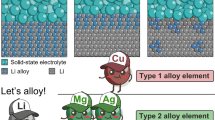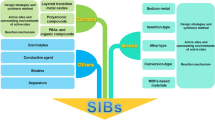Abstract
Along with the explosive growth in the market of new energy electric vehicles, the demand for Li-ion batteries (LIBs) has correspondingly expanded. Given the limited life of LIBs, numbers of spent LIBs are bound to be produced. Because of the severe threats and challenges of spent LIBs to the environment, resources, and global sustainable development, the recycling and reuse of spent LIBs have become urgent. Herein, we propose a novel green and efficient direct recycling method, which realizes the concurrent reuse of LiFePO4 (LFP) cathode and graphite anode from spent LFP batteries. By optimizing the proportion of LFP and graphite, a hybrid LFP/graphite (LFPG) cathode was designed for a new type of dualion battery (DIB) that can achieve co-participation in the storage of both anions and cations. The hybrid LFPG cathode combines the excellent stability of LFP and the high conductivity of graphite to exhibit an extraordinary electrochemical performance. The best compound, i.e., LFP:graphite = 3:1, with the highest reversible capacity (∼130 mA h g−1 at 25 mA g−1), high voltage platform of 4.95 V, and outstanding cycle performance, was achieved. The specific diffusion behavior of Li+ and PF6− in the hybrid cathode was studied using electrode kinetic tests, further clarifying the working mechanism of DIBs. This study provides a new strategy toward the large-scale recycling of positive and negative electrodes of spent LIBs and establishes a precedent for designing new hybrid cathode materials for DIBs with superior performance using spent LIBs.

摘要
考虑到废旧锂离子电池对环境、 资源和全球可持续性发展存在严重的威胁和挑战, 有必要开发出合适的回收技术实现废旧锂离子电池的回收和再利用. 因此, 我们提出了一种全新的绿色高效的直接回收方法, 实现了废旧磷酸铁锂电池中正极LiFePO4 (LFP)和负极石墨的双重回收, 并将其按不同比例复合设计了一种新型双离子电池(DIB)的复合正极材料(LiFePO4/石墨, 简写为LFPG). 这种复合正极能够实现阴离子和阳离子的共同参与脱嵌, 从而贡献更高的容量. 结合LFP的高容量、 高稳定性和石墨的高导电性、 高电压性, 这种复合正极表现出优异的电化学性能. 在不同配比的复合材料中, LFP:graphite = 3:1的复合材料在25 mA g−1的电流密度下展示出接近130 mA h g−1的可逆容量, 达到4.95 V的高电压平台, 并表现出优异的循环性能(在100 mA g−1的电流密度下进行700次循环后仍具有良好的容量保持率), 倍率性能相比回收的单一LiFePO4也得到明显提升. 通过电极动力学研究, 揭示了Li+和PF6−在复合正极中的特定扩散行为, 进一步阐明了DIB的阴/阳离子分阶段嵌入/脱出的工作机理. 本研究为废旧锂离子电池正极和负极材料的大规模回收提供了一种新的策略, 并为利用废锂离子电池设计出性能优良的新型复合型锂离子电池正极材料提供了指导.
Similar content being viewed by others
References
Harper G, Sommerville R, Kendrick E, et al. Recycling lithium-ion batteries from electric vehicles. Nature, 2019, 575: 75–86
Chen M, Ma X, Chen B, et al. Recycling end-of-life electric vehicle lithium-ion batteries. Joule, 2019, 3: 2622–2646
Fan E, Li L, Wang Z, et al. Sustainable recycling technology for Li-ion batteries and beyond: Challenges and future prospects. Chem Rev, 2020, 120: 7020–7063
Ciez RE, Whitacre JF. Examining different recycling processes for lithium-ion batteries. Nat Sustain, 2019, 2: 148–156
Yu J, Wang X, Zhou M, et al. A redox targeting-based material recycling strategy for spent lithium ion batteries. Energy Environ Sci, 2019, 12: 2672–2677
Shin EJ, Kim S, Noh JK, et al. A green recycling process designed for LiFePO4 cathode materials for Li-ion batteries. J Mater Chem A, 2015, 3: 11493–11502
Sun Q, Li X, Zhang H, et al. Resynthesizing LiFePO4/C materials from the recycled cathode via a green full-solid route. J Alloys Compd, 2020, 818: 153292
Natarajan S, Aravindan V. Burgeoning prospects of spent lithium-ion batteries in multifarious applications. Adv Energy Mater, 2018, 8: 1802303
Costa CM, Barbosa JC, Gonçalves R, et al. Recycling and environmental issues of lithium-ion batteries: Advances, challenges and opportunities. Energy Storage Mater, 2021, 37: 433–465
Wu J, Mackenzie A, Sharma N. Recycling lithium-ion batteries: Adding value with multiple lives. Green Chem, 2020, 22: 2244–2254
Zhang X, Li L, Fan E, et al. Toward sustainable and systematic recycling of spent rechargeable batteries. Chem Soc Rev, 2018, 47: 7239–7302
Tran MK, Rodrigues MTF, Kato K, et al. Deep eutectic solvents for cathode recycling of Li-ion batteries. Nat Energy, 2019, 4: 339–345
Lv W, Wang Z, Cao H, et al. A critical review and analysis on the recycling of spent lithium-ion batteries. ACS Sustain Chem Eng, 2018, 6: 1504–1521
Yao Y, Zhu M, Zhao Z, et al. Hydrometallurgical processes for recycling spent lithium-ion batteries: A critical review. ACS Sustain Chem Eng, 2018, 6: 13611–13627
Yi AF, Zhu ZW, Liu YH, et al. Using highly concentrated chloride solutions to leach valuable metals from cathode-active materials in spent lithium-ion batteries. Rare Met, 2020, 40: 1971–1978
Lin J, Li L, Fan E, et al. Conversion mechanisms of selective extraction of lithium from spent lithium-ion batteries by sulfation roasting. ACS Appl Mater Interfaces, 2020, 12: 18482–18489
Arshad F, Li L, Amin K, et al. A comprehensive review of the advancement in recycling the anode and electrolyte from spent lithium ion batteries. ACS Sustain Chem Eng, 2020, 8: 13527–13554
Xiao J, Li J, Xu Z. Challenges to future development of spent lithium ion batteries recovery from environmental and technological perspectives. Environ Sci Technol, 2019, 54: acs.est.9b03725
Natarajan S, Aravindan V. An urgent call to spent LIB recycling: Whys and wherefores for graphite recovery. Adv Energy Mater, 2020, 10: 2002238
Liang HJ, Hou BH, Li WH, et al. Staging Na/K-ion de-/intercalation of graphite retrieved from spent Li-ion batteries: In operando X-ray diffraction studies and an advanced anode material for Na/K-ion batteries. Energy Environ Sci, 2019, 12: 3575–3584
Li WH, Ning QL, Xi XT, et al. Highly improved cycling stability of anion de-/intercalation in the graphite cathode for dual-ion batteries. Adv Mater, 2019, 31: 1804766
Natarajan S, Boricha AB, Bajaj HC. Recovery of value-added products from cathode and anode material of spent lithium-ion batteries. Waste Manage, 2018, 77: 455–465
Li J, Zhong S, Xiong D, et al. Synthesis and electrochemical performances of LiCoO2 recycled from the incisors bound of Li-ion batteries. Rare Met, 2009, 28: 328–332
Zhao Y, Fang LZ, Kang YQ, et al. A novel three-step approach to separate cathode components for lithium-ion battery recycling. Rare Met, 2021, 40: 1431–1436
Hao J, Yang F, Zhang S, et al. Designing a hybrid electrode toward high energy density with a staged Li+ and PF6− deintercalation/intercalation mechanism. Proc Natl Acad Sci USA, 2020, 117: 2815–2823
Yang C, Chen J, Ji X, et al. Aqueous Li-ion battery enabled by halogen conversion-intercalation chemistry in graphite. Nature, 2019, 569: 245–250
Zhou X, Liu Q, Jiang C, et al. Strategies towards low-cost dual-ion batteries with high performance. Angew Chem Int Ed, 2020, 59: 3802–3832
Zeng Z, Liu X, Jiang X, et al. Enabling an intrinsically safe and high-energy-density 4.5 V-class Li-ion battery with nonflammable electrolyte. InfoMat, 2020, 2: 984–992
Zhang SS. Design aspects of electrolytes for fast charge of Li-ion batteries. InfoMat, 2021, 3: 125–130
Heng Y, Gu Z, Guo J, et al. Research progresses on vanadium-based cathode materials for aqueous zinc-ion batteries. Acta Physico Chim Sin, 2020, 0: 2005013
Yang Y, Guo JZ, Gu ZY, et al. Effective recycling of the whole cathode in spent lithium ion batteries: From the widely used oxides to high-energy/stable phosphates. ACS Sustain Chem Eng, 2019, 7: acssuschemeng.9b00526
Li Z, Yang J, Guang T, et al. Controlled hydrothermal/solvothermal synthesis of high-performance LiFePO4 for Li-ion batteries. Small Methods, 2021, 5: 2100193
Li F, Tao R, Tan X, et al. Graphite-embedded lithium iron phosphate for high-power-energy cathodes. Nano Lett, 2021, 21: 2572–2579
Rodríguez-Pérez IA, Zhang L, Wrogemann JM, et al. Enabling natural graphite in high-voltage aqueous graphite∥Zn metal dual-ion batteries. Adv Energy Mater, 2020, 10: 2001256
Liu K, Tan Q, Liu L, et al. Acid-free and selective extraction of lithium from spent lithium iron phosphate batteries via a mechanochemically induced isomorphic substitution. Environ Sci Technol, 2019, 53: 9781–9788
Guo H, Wu C, Xie J, et al. Controllable synthesis of high-performance LiMnPO4 nanocrystals by a facile one-spot solvothermal process. J Mater Chem A, 2014, 2: 10581–10588
Gu ZY, Guo JZ, Sun ZH, et al. Carbon-coating-increased working voltage and energy density towards an advanced Na3V2(PO4)2F3@C cathode in sodium-ion batteries. Sci Bull, 2020, 65: 702–710
Meng YF, Liang HJ, Zhao CD, et al. Concurrent recycling chemistry for cathode/anode in spent graphite/LiFePO4 batteries: Designing a unique cation/anion-co-workable dual-ion battery. J Energy Chem, 2022, 64: 166–171
Maccario M, Croguennec L, Wattiaux A, et al. C-containing LiFePO4 materials—Part I: Mechano-chemical synthesis and structural characterization. Solid State Ion, 2008, 179: 2020–2026
Castro L, Dedryvère R, El Khalifi M, et al. The spin-polarized electronic structure of LiFePO4 and FePO4 evidenced by in-lab XPS. J Phys Chem C, 2010, 114: 17995–18000
Hou BH, Wang YY, Ning QL, et al. Dual-carbon enhanced FeP nanorods vertically grown on carbon nanotubes with pseudocapacitance-boosted electrochemical kinetics for superior lithium storage. Adv Electron Mater, 2019, 5: 1900006
Zhang M, Garcia-Araez N, Hector AL. Understanding and development of olivine LiCoPO4 cathode materials for lithium-ion batteries. J Mater Chem A, 2018, 6: 14483–14517
Longoni G, Panda JK, Gagliani L, et al. In situ LiFePO4 nano-particles grown on few-layer graphene flakes as high-power cathode nanohybrids for lithium-ion batteries. Nano Energy, 2018, 51: 656–667
Li F, Liu Z, Shen J, et al. A nanorod-like Ni-rich layered cathode with enhanced Li+ diffusion pathways for high-performance lithium-ion batteries. J Mater Chem A, 2021, 9: 2830–2839
Pender JP, Jha G, Youn DH, et al. Electrode degradation in lithium-ion batteries. ACS Nano, 2020, 14: 1243–1295
Zhang H, Yang Y, Ren D, et al. Graphite as anode materials: Fundamental mechanism, recent progress and advances. Energy Storage Mater, 2021, 36: 147–170
Zhang M, Song X, Ou X, et al. Rechargeable batteries based on anion intercalation graphite cathodes. Energy Storage Mater, 2019, 16: 65–84
Hao J, Li X, Song X, et al. Recent progress and perspectives on dual-ion batteries. EnergyChem, 2019, 1: 100004
Liu H, Strobridge FC, Borkiewicz OJ, et al. Capturing metastable structures during high-rate cycling of LiFePO4 nanoparticle electrodes. Science, 2014, 344: 1252817
Wang H, Wang R, Liu L, et al. In-situ self-polymerization restriction to form core-shell LiFePO4/C nanocomposite with ultrafast rate capability for high-power Li-ion batteries. Nano Energy, 2017, 39: 346–354
Acknowledgements
This work was supported by the National Natural Science Foundation of China (52173246 and 91963118) and the 111 Project (B13013).
Author information
Authors and Affiliations
Contributions
Author contributions Wu XL contributed the concept; Du KD and Meng YF prepared the materials and performed the experiments; Zhao XX and Wang XT supervised the revision of the paper; Luo XX and Zhang W finished the theoretical calculation; Du KD and Wu XL wrote the paper; Wu XL supervised the analysis of the whole work. All authors took part in the general discussion.
Corresponding author
Additional information
Conflict of interest
The authors declare that they have no conflict of interest.
Kai-Di Du received her bachelor’s degree from Hebei Normal University in 2019. Now she is pursuing her master’s degree under the supervision of professor Xing-Long Wu at the Department of Chemistry, Northeast Normal University. Her research interests focus on the recovery and reuse of spent lithium-ion batteries.
Xing-Long Wu is currently a professor at the Northeast Normal University, China. He received his PhD degree from the Institute of Chemistry, Chinese Academy of Sciences (ICCAS), in 2011. After continuing a two-year postdoctoral work in ICCAS, he moved to the Northeast Normal University as an associate professor in 2013 and became a full professor in 2018. His current research interests focus on high-performance materials for advanced secondary batteries such as Na/K/Li-ion batteries and dual-ion batteries, as well as the reuse and recycle of spent Li-ion batteries.
Supporting Information
Rights and permissions
About this article
Cite this article
Du, KD., Meng, YF., Zhao, XX. et al. A unique co-recovery strategy of cathode and anode from spent LiFePO4 battery. Sci. China Mater. 65, 637–645 (2022). https://doi.org/10.1007/s40843-021-1772-6
Received:
Accepted:
Published:
Issue Date:
DOI: https://doi.org/10.1007/s40843-021-1772-6




